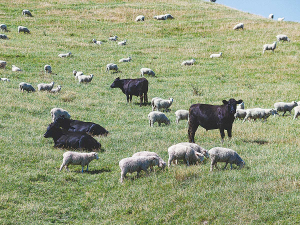Ministry for the Environment to sponsor Ballance Farm Environment Award
The Ministry for the Environment is joining as a national award sponsor in the Ballance Farm Environment Awards (BFEA from next year).
 The Ministry for the Environment's 2021 Greenhouse Gas Inventory says that for the year 2019, agriculture was New Zealand's biggest emitting sector.
The Ministry for the Environment's 2021 Greenhouse Gas Inventory says that for the year 2019, agriculture was New Zealand's biggest emitting sector.
The Ministry for the Environment’s (MfE) 2021 Greenhouse Gas Inventory revealed that for the year 2019, agriculture was among the two largest contributors to New Zealand’s gross Greenhouse Gas (GHG) emissions.
The report, which documents all of New Zealand’s human-generated greenhouse gas emissions and removals since 1990, shows that New Zealand’s gross emissions were 82.3 million tonnes of carbon dioxide equivalent (Mt CO2-e) in 2019.
The report states that emissions for the agriculture sector made up 48% of New Zealand’s gross emissions.
It also states that between 1990 and 2019, gross emissions increased by 26%, largely down to increases in methane from dairy cattle digestive systems and carbon dioxide from road transport.
On the whole, gross emissions in 2019 comprised 46% carbon dioxide, 42% methane, 10% nitrous oxide and 2% fluorinated gases.
The Greenhouse Gas Inventory is collated as one of New Zealand’s mandatory reporting obligations under the United Nations Framework Convention on Climate Change and the Kyoto Protocol.
It informs MfE policy recommendations on climate change and includes data that helps monitor New Zealand’s progress towards emissions reduction targets.
When American retail giant Cosco came to audit Open Country Dairy’s new butter plant at the Waharoa site and give the green light to supply their American stores, they allowed themselves a week for the exercise.
Fonterra chair Peter McBride says the divestment of Mainland Group is their last significant asset sale and signals the end of structural changes.
Thirty years ago, as a young sharemilker, former Waikato farmer Snow Chubb realised he was bucking a trend when he started planting trees to provide shade for his cows, but he knew the animals would appreciate what he was doing.
Virtual fencing and herding systems supplier, Halter is welcoming a decision by the Victorian Government to allow farmers in the state to use the technology.
DairyNZ’s latest Econ Tracker update shows most farms will still finish the season in a positive position, although the gap has narrowed compared with early season expectations.
New Zealand’s national lamb crop for the 2025–26 season is estimated at 19.66 million head, a lift of one percent (or 188,000 more lambs) on last season, according to Beef + Lamb New Zealand’s (B+LNZ) latest Lamb Crop report.